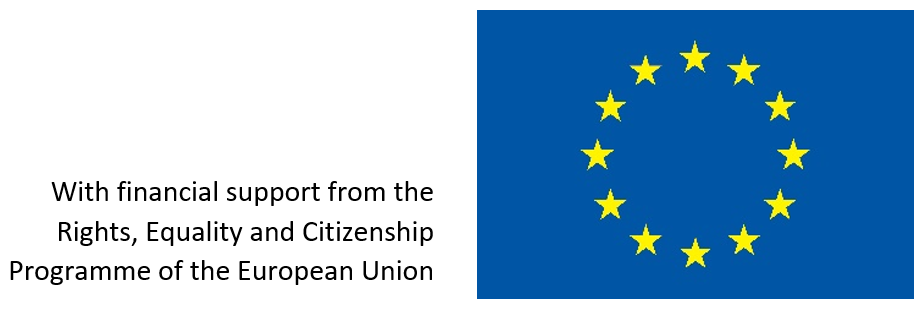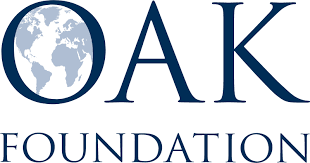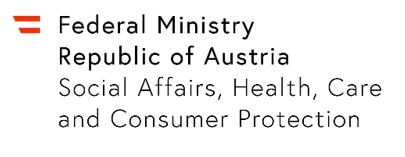“If there is someone hearing what I’m saying now, I would suggest to them to study rather than getting married”, Yelina
“I suffered by being married as a child and I don’t want this to happen to any other girl of my age. When I was younger I had no idea how to stop my marriage but now I’ve learnt how to help other girls to stop theirs”
According to the Office of the High Commissioner for Human Rights (OHCHR), child marriage is a marriage in which at least one of the parties is a child; early marriage is a marriage involving a person aged below 18 in countries where the age of majority is attained earlier or upon marriage or a marriage where both spouses are 18 or older but other factors make them unready to consent to marriage, such as their level of physical, emotional, sexual and psychosocial development, or a lack of information regarding the person’s life options; forced marriage is any marriage which occurs without the full and free consent of one or both of the parties and/or where one or both of the parties is/are unable to end or leave the marriage, including as a result of duress or intense social or family pressure.
Child, early and forced marriage (CEFM) is a fundamental violation of children’s rights. This harmful practice has drastic effects on married children. It is not simply a question of being forced to accept a spouse but involves a series of human rights violations such as right to education, right to health, right to be protected from any kind of violence, abuse and exploitation, freedom of expression and thought. It compromises girls´ intellectual and social development and forces them to fulfil the role of a housewife and mother, denying them of their life choices, an education, and a future.
Furthermore, such a harmful traditional practice can be linked to others like FGM. In southern Ethiopia for instance, child marriage usually follows the practice of female genital mutilation, which is considered a rite of passage to womanhood. Moreover, child marriages expose girls at a high risk of domestic violence perpetuated by a husband or in-laws, including psychological, physical, and sexual violence, such as marital rape, as well as human trafficking, sexually transmitted diseases, early and frequent pregnancy and childbirth, high average of maternal morbidity and mortality rates. The risk of domestic violence increases in case of large age gaps between a girl and her husband.
CEFM can be practiced in different ways and, although the reasons can vary from one community to another, it is deeply rooted in gender inequality and the belief that girls are inferior to boys and men. Overall, girls are often seen as a burden and are undervalued and restricted to domestic and reproductive roles, subjected to patriarchal control and family honour, especially concerning their sexuality, and gender-based violence. Poverty plays a great role and families pay a dowry or “bride price” to sell their daughters to older men. In particular, families pay less money if the bride is young and uneducated. Therefore, giving a daughter in marriage allows parents to reduce family expenses by ensuring they have one less person to feed. In some cases, marrying off a daughter is a way to repay debts or settle social, economic and political alliances. Parents and society do not consider alternatives to child marriage, nor do they see the need to invest in their daughters’ education, especially due to the misleading belief that that girls will be ‘safer’ by being married young, and, consequently, in times of humanitarian crisis, child marriage rates increase.
A girl forced to undergo this practice suffers different degrees of force, coercion or deception. She can be exposed to emotional pressure by her family by repeatedly telling her that her family´s social standing and reputation are at stake, as well as isolating her. As often happens, if she fights back she can be abducted and imprisoned and, in more severe cases, she can be subject to physical or sexual abuse, including rape. Often women and girls attempt to flee their communities or to commit suicide to avoid or escape the marriage.
International human rights treaties stress the need to take measures to address CEFM, and the UN Sustainable Development Goals adopted in September 2015 include eliminating child marriage as a key target by 2030 for advancing gender equality.
The right to free and full consent to marriage is recognized in the Universal Declaration of Human Rights, according to which consent cannot be ‘free and full’ when one of the parties involved is not sufficiently mature to make an informed decision about a life partner. Although marriage is not mentioned directly in the Convention on the Rights of the Child, child marriage is linked to the right to freedom of expression, the right to protection from all forms of abuse, and the right to be protected from harmful traditional practices, and it is frequently addressed by the Committee on the Rights of the Child. The Convention on Consent to Marriage, Minimum Age for Marriage and Registration of Marriages states that “No marriage shall be legally entered into without the full and free consent of both parties, such consent to be expressed by them in person after due publicity and in the presence of the authority competent to solemnize the marriage and of witnesses, as prescribed by law.” The Convention on the Elimination of All Forms of Discrimination against Women states that “The betrothal and the marriage of a child shall have no legal effect, and all necessary action, including legislation, shall be taken to specify a minimum age for marriage (..)”. The Istanbul Convention defines forced marriage as a form a violence and calls on States Parties to criminalize such marriages: “Parties shall take the necessary legislative or other measures to ensure that the intentional conduct of forcing an adult or a child to enter into a marriage is criminalized. Parties shall take the necessary legislative or other measures to ensure that the intentional conduct of luring an adult or a child to the territory of a Party or State other than the one she or he resides in with the purpose of forcing this adult or child to enter into a marriage is criminalized”.
However, this practice remains widespread, affecting women and girls globally. Child, early and forced marriage is not just limited to Sub-Saharan Africa and South Asia, which have the highest rates of child marriage overall, but it happens everywhere, including Europe.
In Europe, although this practice is recognized as crime and abuse of human rights, due to the flow of migrants, the number of child brides is rising. For example, in 2016, Germany reported a sharp rise in child marriages after noting that many young girls of migrant or refugee background disappeared from school. Berlin reported 100 children married to older men, with government officials expecting the number to rise with the increase of migrants entering in the country. According to reports, there could be roughly over 1,000 child marriages, between young girls and older men. In some regions of Germany like North Rhine-Westphalia, there were 188 underage marriages. The vast majority of the underage brides are from Syria where, according to Girls Not Brides, 13 per cent of all girls under 18 and three per cent by the age of 15 are married. Child brides are also Iraqi and Afghan girls aged between 15 and 17 years. In the same year, asylum centres in Norway reported that dozens of child brides had arrived from Syria, Iraq, and Afghanistan, with the youngest being just 11-years of age. The problem of Syrian child brides has been highlighted also in the Netherlands by the disappearance of a pregnant 14-year-old girl and her 24-year-old husband. Dutch asylum centres reported 20 child brides between 13 and 15 years old. Twenty-two girls wanted to enter the Netherlands via family reunification, with two being 13 years old and another two only 14. According to Childline, in the UK, in 2016 and 2017 there were 205 counselling sessions on forced marriage, a 12% increase from 2015. Girls as young as 13 told Childline counsellors they were frightened about being taken abroad and forced to marry strangers by their families and many said they experienced emotional abuse from their parents. Many children do not speak up about forced marriage because they are worried about family honour and scared about their parents becoming violent if they do not do what they want or search for help.
Governments have the responsibility to develop and implement laws and policies to eradicate this harmful practice. Many of child brides do not know their rights and do not have access to sexual and reproductive health information and services, such as pregnancy, reliable contraception methods, protection against sexually transmitted infections, or emergencies obstetric care, especially for the complications due to the stress of delivery in physically immature bodies.
It is worthwhile to mention the inspiring Theory of Change elaborated by Girls Not Brides to end child marriage and support married girls. Since there is not a single solution, the steps to take in order to secure all girls a better future, are focused on four areas:
- Empower girls: through programmes investing in girls, their participation and their well-being, and by improving educational and economic opportunities as alternatives to child marriage, girls should see themselves as empowered rights owners with choices and new possibilities. So that by changing what families and communities expect from them, marrying young girls should be no longer the only option available. Moreover, access to health, education, economic, and legal support for married and unmarried girls should significantly increase. For instance, Girls Not Brides member organisation Solidarity of Refugee Women for Social Welfare (SOFERES) provides vocational training for girls at risk of child marriage, so they can be independent, and provides workshops on issues like child marriage and HIV/AIDS, making them aware about their rights.
- Mobilise families and communities: since pressure to marry young usually comes from girls’ families and communities and the broader cultural attitudes, it is important working together to address these deep-rooted values and traditions by engaging families, communities, young people, men and boys, and the media, to change attitudes and behaviours related to child marriage. Consequently, if families, communities and young people are aware of the harmful impact of child marriage on girls, they will make different choices and prefer not to marry girls as children. Also, the use of media to inform and support norm change to end child marriage will increase.
- Provide services: many structural barriers push girls into child marriage and prevent them from accessing support once they are married. By providing better education, health and legal services and programmes, including those providing girls with the skills necessary to be financially independent, they should be better equipped to avoid child marriage and married girls should be able to continue their education, and, if they wish, to leave marriage. Moreover, health and education services should establish protocols to identify the warning signs and address the risks of child marriage.
- Establish and implement laws and policies: governments should demonstrate their commitment to end child marriage by developing strong laws and policies. If properly enforced, robust laws and policies reflecting international and regional human rights standards will help change attitudes in a society and provide a framework to improve services for young girls and to increase educational, economic and social opportunities for married and unmarried girls, protecting girls’ and women’s rights.
By Chiara Paganelli , WAVE Intern
Photo by Charlein Gracia on Unsplash
Sources:
https://www.girlsnotbrides.org/how-can-we-end-child-marriage/
https://caretippingpoint.org/wp-content/uploads/2018/06/CARE_CEFM_CapacityStatement.pdf
Click on the button to load the content from data.unicef.org.
https://www.ohchr.org/EN/Issues/Women/WRGS/Pages/ChildMarriage.aspx
https://www.hrw.org/world-report/2016/ending-child-marriage
https://www.nspcc.org.uk/what-we-do/news-opinion/12-rise-Childline-counselling-sessions-forced-marriage/
https://www.breitbart.com/europe/2016/09/01/child-brides-rise-german-capital/
https://www.globalcitizen.org/en/content/ways-world-is-beating-child-marriage-2018/
Click on the button to load the content from data.unicef.org.
https://www.hrw.org/world-report/2016/ending-child-marriage#






